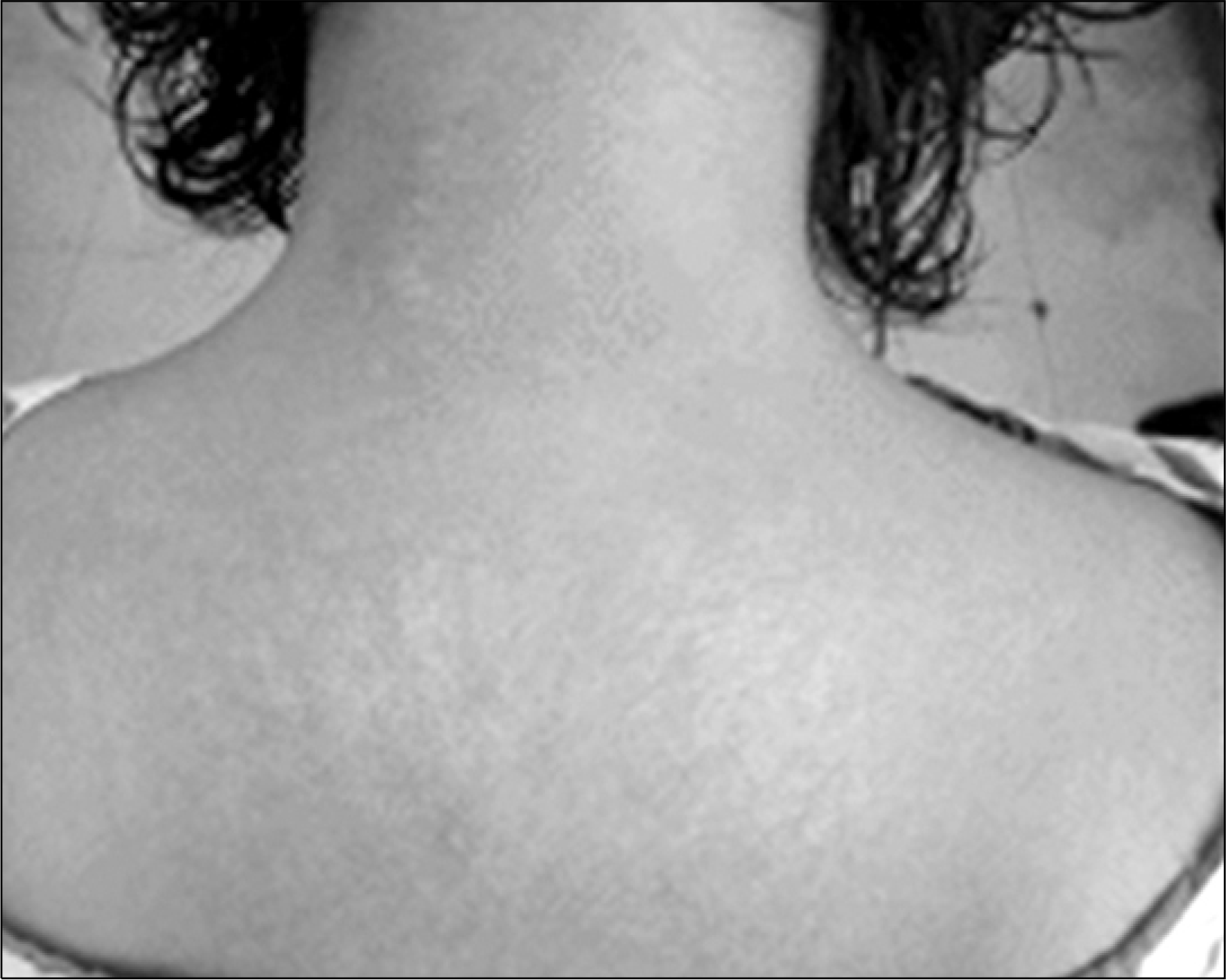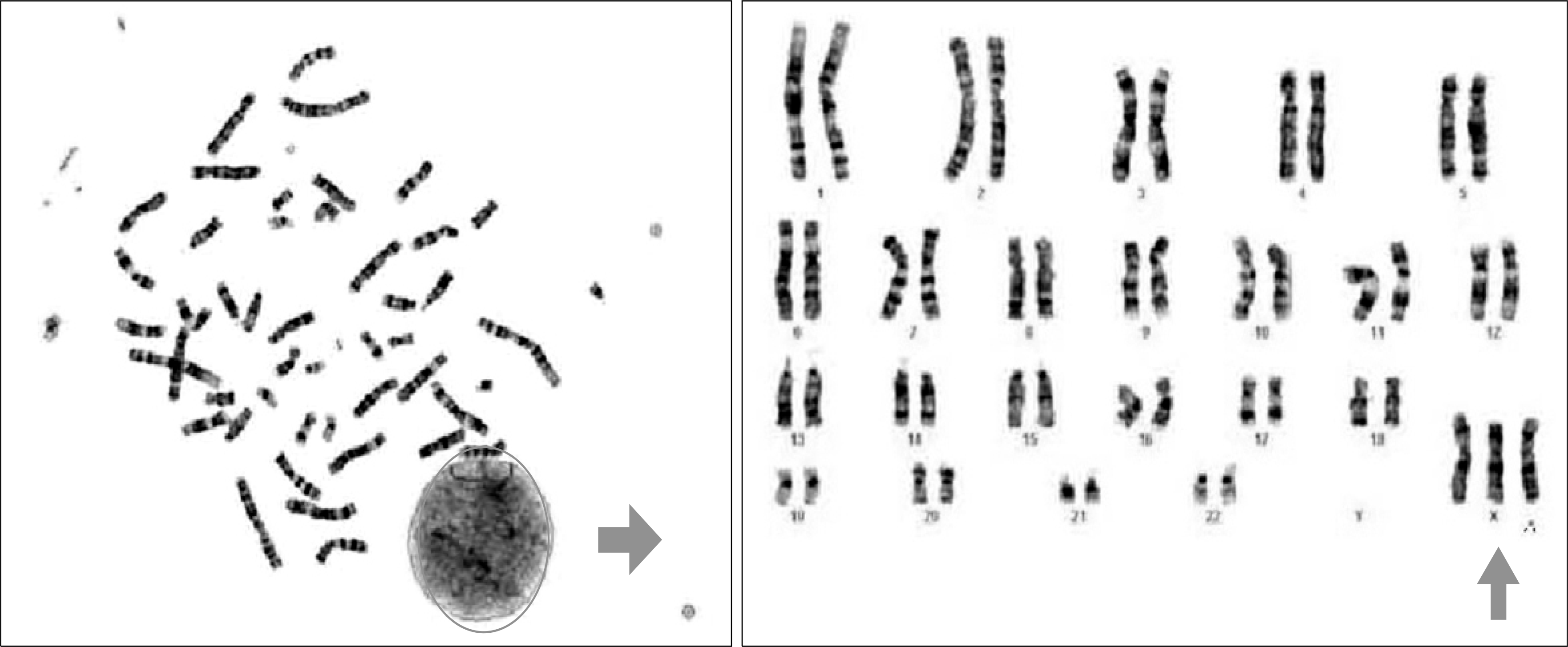Abstract
Systemic scleroderma is a collagen-vascular disease of unknown etiology. Although the pathogenesis is poorly understood, disease progression involves the vasculature, the immune system and extracellular matrix deposition. systemic scleroderma occurs 3∼8 times more frequently in women than men and pathogenesis of systemic scleroderma may be related to female X chromosome. but the role of X chromosome in autoimmunity has not been illustrated yet. Most recently reports, the disturbances in X chromosome and inactivation of X chromosome may be the cause of autoimmunity in abnormal sex chromosome syndrome. Also autoimmune diseases such as systemic scleroderma is increased in Turner's syndrome. the author had experienced a woman with systemic scleroderma who had been diagnosed to triple X syndrome due to infertility in the past. which was very rare case and not reported yet. So the author report a case of systemic scleroderma with triple X syndrome with literature review.
References
2. Derk CH, Jimenez SA. Systemic sclerosis: current views of its pathogenesis. Autoimmun Rev. 2003; 2:181–91.

3. Ruddy S, Harris ED, Sledge CB, Seibold JR. Mixed connective tissue disease, scleroderma, and inflammatory disease. Kelly's textbook of rheumatology. 7th ed. p.1279–309. Philadelphia, Saunders,. 2005.
4. Silman AJ, Hochberg MC. Scleroderma. Epidemiology of the rheumatic disease. p.192–219. Oxford, Oxford University press,. 1993.
5. Medina KL, Kincade PW. Pregnancy-related steroids are potential negative regulators of B lymphopoiesis. Proc Natl Acad Sci USA. 1994; 91:5382–6.

6. Smithson G, Breamer WG, Shultz KL, Christianson SW, Shultz LD, Kincade PW, et al. Increased B lymphoiesis in genetically sex steroid-deficient hypo-gonadal (hpg) mice. J Exp Med. 1994; 180:717–20.
7. Brown CJ, Robinson WP. The cause and consequences of random and non-random X chromosome inactivation in humans. Clin Genet. 2000; 58:353–63.
8. Selmi C, Invernizzi P, Gershwin ME. The X chromosome and systemic sclerosis. Curr Opin Rheumatol. 2006; 18:601–5.

9. Tan SS, Williams EA, Tam PP. X-chromosome inactivation occurs at different times in different tissues of the postimplantation mouse embryo. Nat Genet. 1993; 3:170–4.

10. Ozbalkan Z, Baqiskar S, Kiraz S, Akyerli CB, Ozer HT, Yavuz S, et al. Skewed X chromosome inactivation in blood cells of women with scleroderma. Arthritis Rheum. 2005; 52:1564–70.

11. Hatakeyama C, Anderson CL, Beever CL, Penaherrera MS, Brown CJ, Robinson WP, et al. The dynamics of X-inactivation skewing as women age. Clin Genet. 2004; 66:327–32.

12. Invernizzi P, Miozzo M, Selmi C, Persani L, Battezzati PM, Zuin M, et al. X Chromosome Monosomy: A common mechanism for autoimmune disease. J Immunol. 2005; 175:575–8.
13. Rovenský J. Rheumatic disease and Klinfelter's syndrome. Autoimmun Rev. 2006; 6:33–6.
14. Rovet J, Netley C, Bailey J, Keenan M, Stewart D, Intelligence and achievement in children with extra X aneuploidy. Am J Med Genet. 1995; 60:356–63.




 PDF
PDF ePub
ePub Citation
Citation Print
Print




 XML Download
XML Download